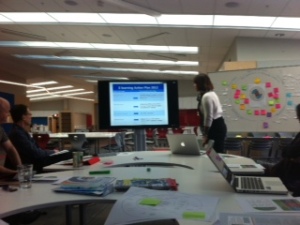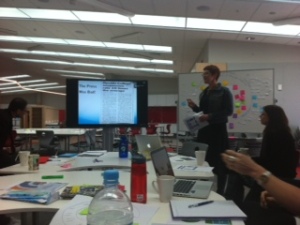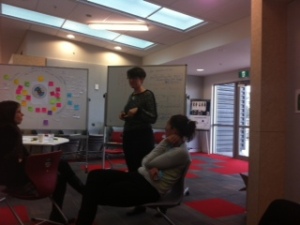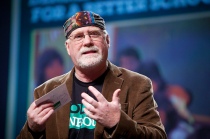Last week at HPSS was great. Hard, but great. I realised that I forgot to blog last week and I cannot be sure if it is tiredness, laziness or that I haven’t really nailed down my thoughts yet. With all of those in mind, I feel the urge to write now, even if it is just a summary of what we did so I can keep track of my ideas over time.
Our focus last week was leadership and learning.
Monday:
The highlight for me was working with Daniel Birch, the Principal of Hobsonville Point Primary School, where he ran a session about learning. He placed us firmly in the role of the learner to make us thoughtfully consider how it feels to be a learner. Some of the activities were easy for me (such as working in a pair to alternate counting aloud) , some were more difficult (alternating counting, clapping and clicking). Then we moved onto an activity to justify why learners should not be placed in their age group only where we placed ourselves on a continuum in our confidence with Te Reo. While I know some words, I still consider myself a novice in this area. As a staff we spread across the continuum, despite age, which was proof that people do not learn at the same pace. I really liked some of the strategies that Daniel used to explain learning – especially the use of photos to allow people to create their own metaphors. I chose a mosaic (not the one below but I really like the Silchester Mosaic – Classics teacher in me!) to describe the connectedness of learning; each piece by itself does not really create anything or lacks value, but when there are connections made, it is a really powerful collaboration.

Silchester Mosaic
Tuesday:
Leadership. Management. Those two terms were discussed, dissected and debated. We were asked to divvy up some descriptors under these two headings. For some, they saw management as a bit of a ‘dirty’ word. It had really negative connotations and while I could agree that poor management justifies such extremes, good management is so powerful. I have experienced ‘good’ and ‘bad’ leaders – those who micro-managed, those who planned big but did not not follow through – but am so grateful for those experiences. I was really aware that I had great leadership at Northcote College, leaders who also managed effectively, and will continue to be grateful for the examples set for me to emulate.
We moved onto our ‘Julia Circles’ to focus on leadership using the Leading from the Middle model to link our values, beliefs, principles and practices. It felt as if we really made headway in solidifying our collective thinking, our vision and our agreed practices. I left for home on Tuesday with a sense of achievement.

Educational Leadership Model
Wednesday:
Wednesday was an overview from the three Deputy-Principals (Claire, Lea and Di) on their areas of responsibility in the school as a lead into the LOLs breaking off into our leadership roles. I loved this. I knew that they were amazing educators, practitioners and leaders but I feel so privileged to be working with such a strong leadership team. Nuff said.

Claire Amos

Lea Vellenoweth

Di Cavallo
Thursday:
LOLs broke up into the teams of LTLs (Learning Team Leaders), SLLs (Specialist Learning Leaders) and LPL (Learning Partnership Leader). Sally, Yasmin (the other LTLs) and I went to work with Lea. I must admit this was the first time we had worked in a small group and it was amazing how quick we were to jump into the practices of the learning communities and learning hubs, without considering the values, beliefs and principles – sheesh, had we learnt nothing!!!
Friday:
We came together in the morning for some shared PD with the HPPS staff – the secondary staff discussed an object which revealed something new about us. I love these getting to know each other activities but am so aware that Lea is running us like a learning hub – great way to experience hubs in an authentic way. After a celebration for Tally at morning tea, we were back in our leadership teams. The LTLs what we each think we bring to the table in terms of the role, which Lea kindly documented for us and,after yesterday when things jumped to practices, we were able to articulate both the practices we bring as well as the underpinning principles. I love learning about people. I love knowing more and more about what makes them tick and this was a great way to allow us to consider where to next.
Weekend:
I was lucky enough to have a meeting in the weekend with other amazing Classical Studies teachers for the annual meeting of the New Zealand Association of Classical Teachers executive council – what a mouthful! My role on the council has a leadership aspect and I felt well equipped to lead in that two day meeting – I was armed with my ‘Julia Circles’ and upon reflection, realised how imperative it is to have a mix of leadership and management. Mark Obsorne’s words from earlier in the month bounced around in my brain a few times over the weekend, ‘vision without implementation is just hallucination‘ (I actually think that this is Thomas Edison’s quote but as Mark said it, I now attribute it to him). I am so thrilled to be working with such amazing visionaries who are also able to implement the plan and I have high hopes for Classics teaching in New Zealand.








